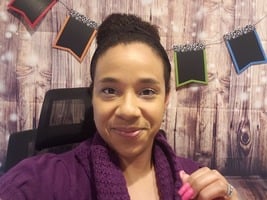PHILADELPHIA (February 20, 2014) — For people on the autism spectrum, going to an unfamiliar place can be challenging. And since, according to the Centers for Disease Control, about one in 88 children is affected by autism, it is a significant issue that the Academy of Natural Sciences of Drexel University is leading the way in addressing.
“Everyone should have access to educational cultural experiences,” said Academy Director of Education and Lifelong Learning Timshel Purdum. “Institutions like the Academy have a responsibility to make their facilities accessible and fun for all.”
In a new initiative aimed at making a visit to the science museum as stress-free, fun and educational as possible, the Academy has begun implementing several programs designed specifically for children on the spectrum. The initiative is funded in part by the Institute of Museum and Library Services with the goal of improving access to museums, workshops and volunteer opportunities for people on the autism spectrum. Partners in the grant include the New Jersey Academy of Aquatic Sciences, Autism Inclusion Resources, and the A.J. Drexel Autism Institute.
Starting this month, families and teachers now can access “museum stories” on the Academy’s website at ansp.org/visit/plan/accessibility/.The museum stories are a pre-visit tool to prepare children for what they might experience in the museum, where loud noises, unfamiliar sights, bright and dark rooms, and unpredictable live animals may cause discomfort and stress.
“Our kids struggle with things like too much light, noise and activity,” said Lisa Lightner, a board member for Pennsylvania Education for All Coalition and founder of the special-needs blog A Day In Our Shoes.com. “Knowing that there are things in place to make our visit easier allows us to go with confidence.”
The written stories are told from a child’s perspective and describe each exhibit in terms of sensation. The stories are classified as level one, for younger children, and level two, for older children. For example, the level one story about Dinosaur Hall reads, “I will see big skeletons of dinosaurs. The skeletons are very big and can be scary to look at, but they will not hurt me.”
There is a visual element to all the stories, but for children who are particularly visually oriented, a “picture schedule” also is available. While it is best to read the museum stories in advance of a museum visit, the guides are available at the admissions desk upon request. The guides were developed by Academy staff, with the guidance of Temple University Associate Professor Roger I. Ideishi. Academy educators and the floor staff who interact with museum guests have received training in interacting with visitors on the autism spectrum.
In addition to the museum stories, the Academy has held “Access to Science” days, where the museum is open after regular hours only to families with children on the spectrum. The next event, Autism Play Date, will be held Saturday, March 15, from 5:30–8:30 p.m., and will be hosted with Jaden’s Voice, a Philadelphia nonprofit that works to enhance the lives of children with autism and their families. To register for the event visit autismplaydate.eventbrite.com.
In the fall, the Academy piloted an afterschool paleontology program for teens on the spectrum. The Academy’s educators worked closely with consultants to develop a curriculum that used student interest in paleontology as a basis for practicing and developing social skills. Students participating in the program were from the Y.A.L.E. school in Cherry Hill. The Academy will be running a second paleontology program for teens on the spectrum in fall 2014.
To read about the Academy’s first Access to Science event in summer 2013, visit http://bit.ly/1jBA5qQ.


